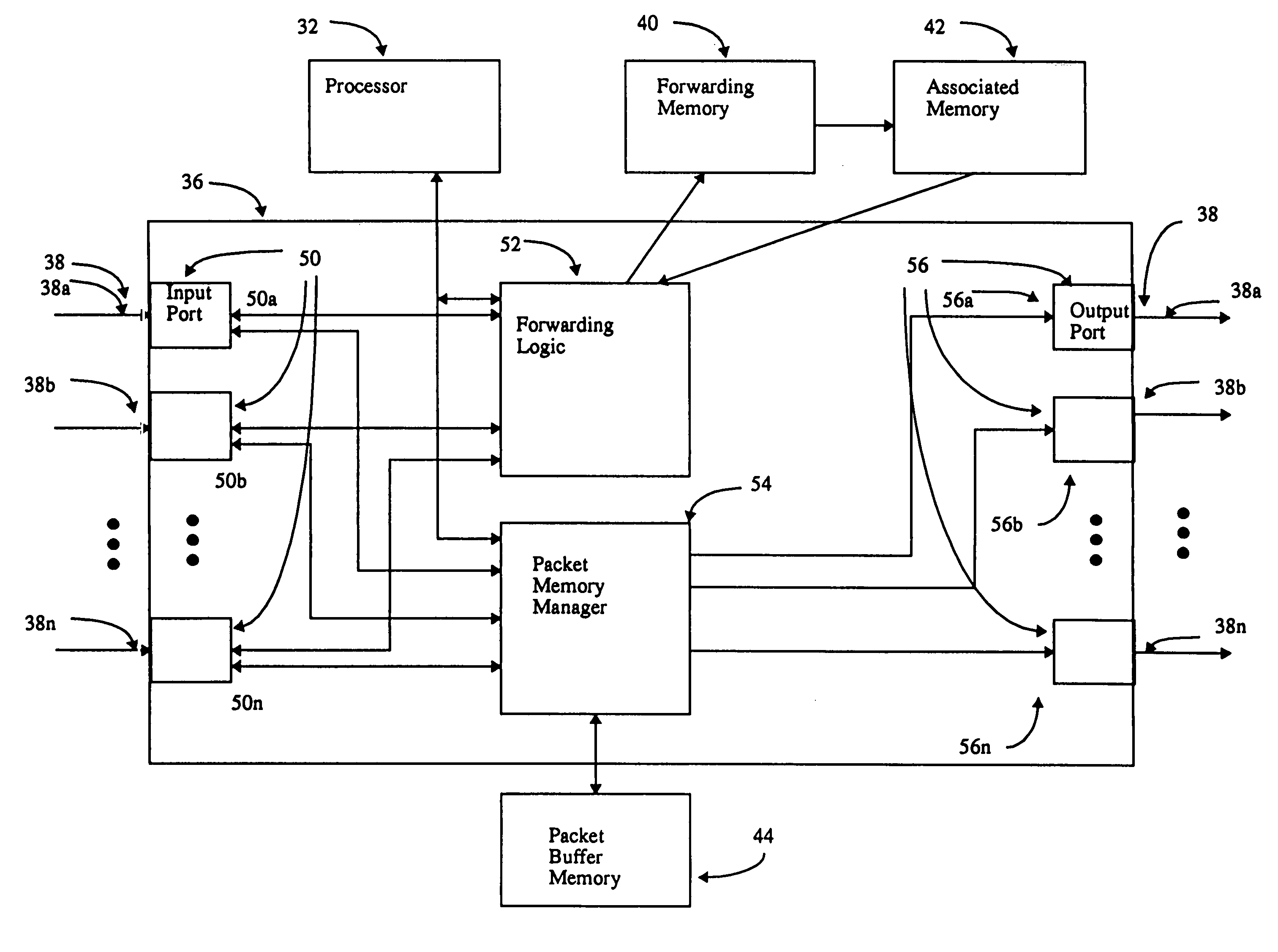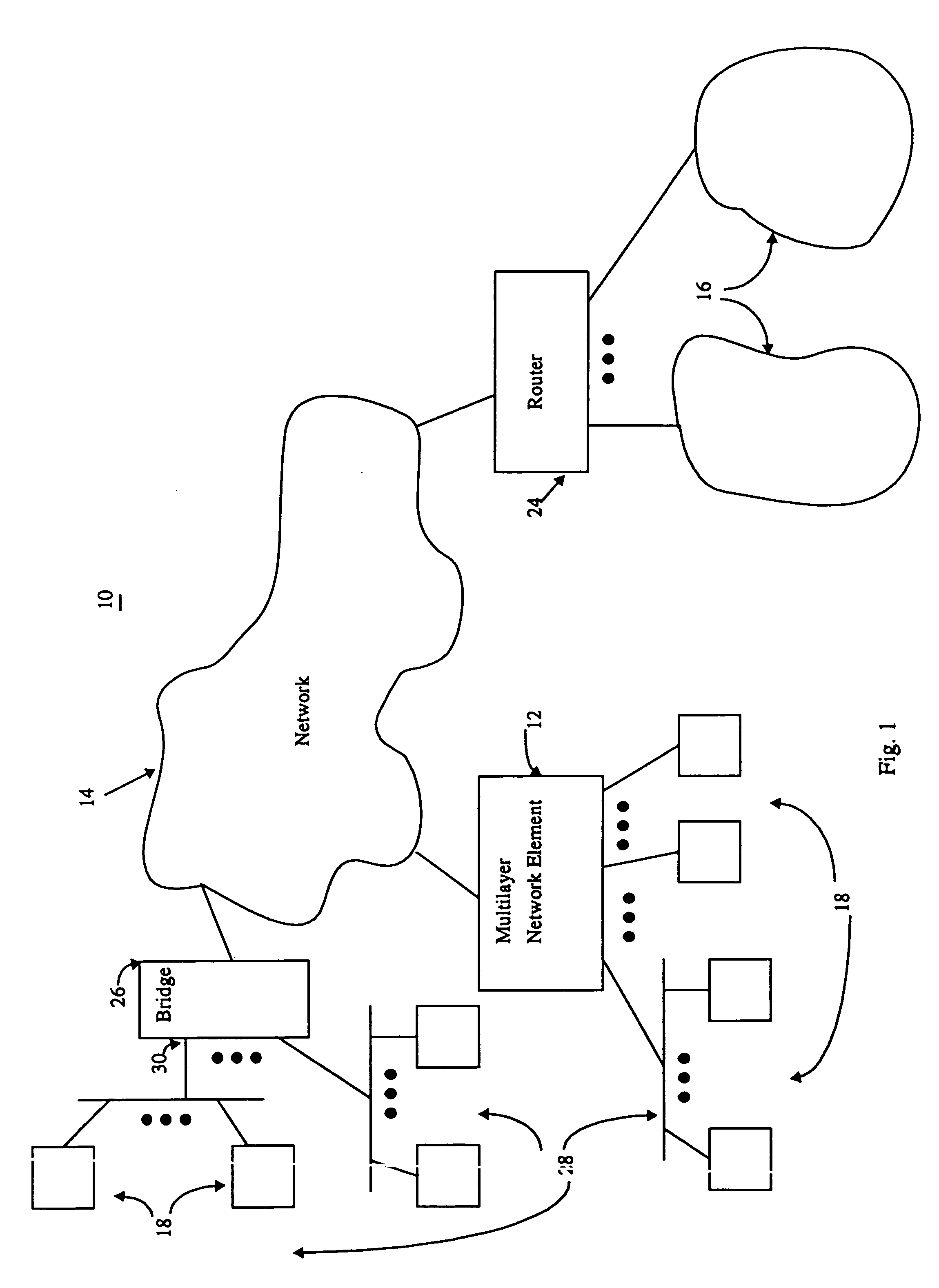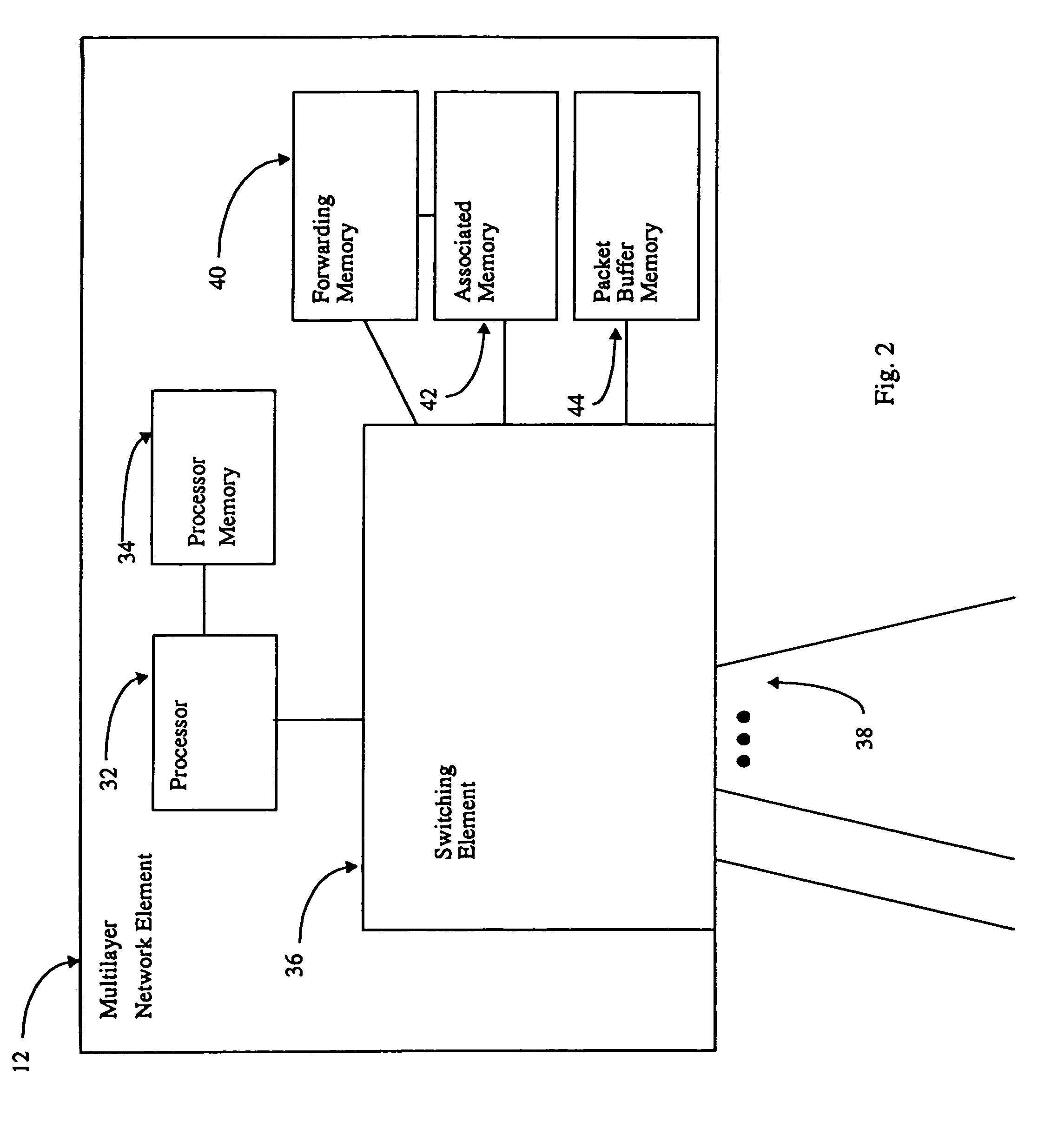System and method for a quality of service in a multi-layer network element
- Summary
- Abstract
- Description
- Claims
- Application Information
AI Technical Summary
Benefits of technology
Problems solved by technology
Method used
Image
Examples
Embodiment Construction
[0051]FIG. 1 illustrates a system incorporating a multi-layer network element according to the present invention. The system includes the multi-layer network element, various networks, end stations, routers, and bridges. By way of example and as broadly embodied and described herein, a system 10 incorporating a multi-layer network element 12 according to the present invention includes networks 14 and 16, end stations 18, router 24, bridge 26, and local area networks (LAN) 28.
[0052]The bridge 26 connects some of the LANs 28 and end stations 18 to the network 14 and to each other. The bridge 26 may be a conventional learning bridge. The bridge 26 keeps track of the addresses of the end stations 18 that transmit a packet showing up on one of ports 30 to the bridge 26. The end stations 18 may be any device capable of sending or receiving packets of information. Typically, the end stations 18 are personal computers, workstations, printers, servers, and / or any other device that can be con...
PUM
 Login to View More
Login to View More Abstract
Description
Claims
Application Information
 Login to View More
Login to View More - R&D
- Intellectual Property
- Life Sciences
- Materials
- Tech Scout
- Unparalleled Data Quality
- Higher Quality Content
- 60% Fewer Hallucinations
Browse by: Latest US Patents, China's latest patents, Technical Efficacy Thesaurus, Application Domain, Technology Topic, Popular Technical Reports.
© 2025 PatSnap. All rights reserved.Legal|Privacy policy|Modern Slavery Act Transparency Statement|Sitemap|About US| Contact US: help@patsnap.com



